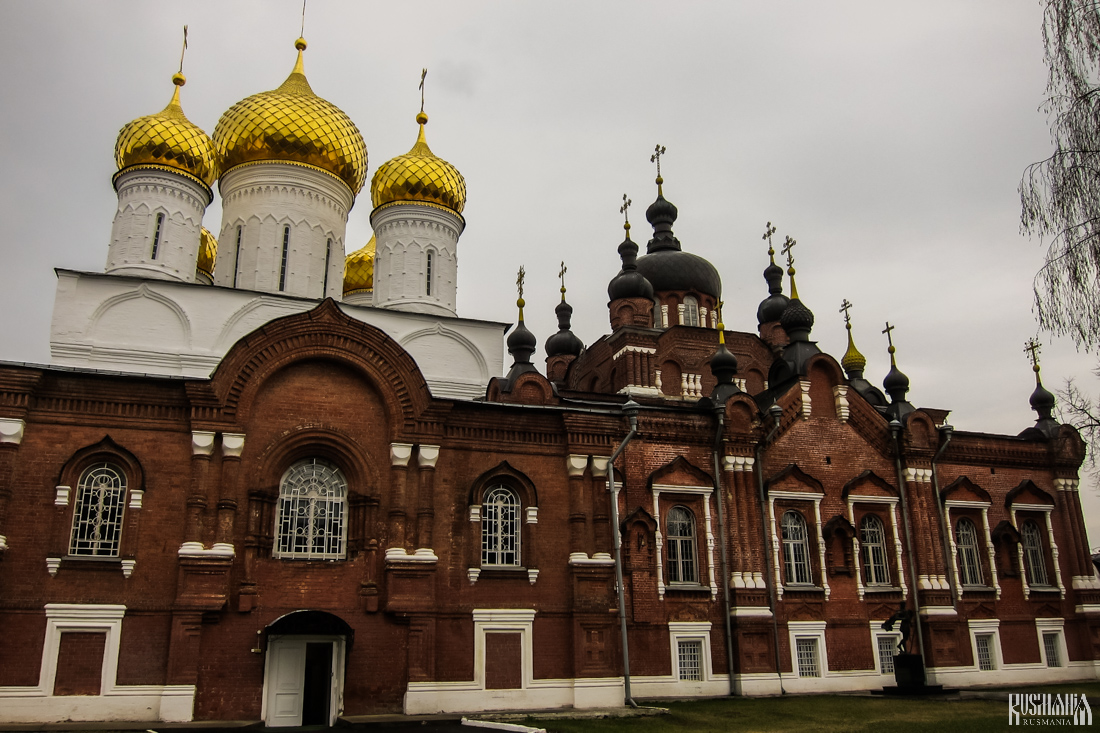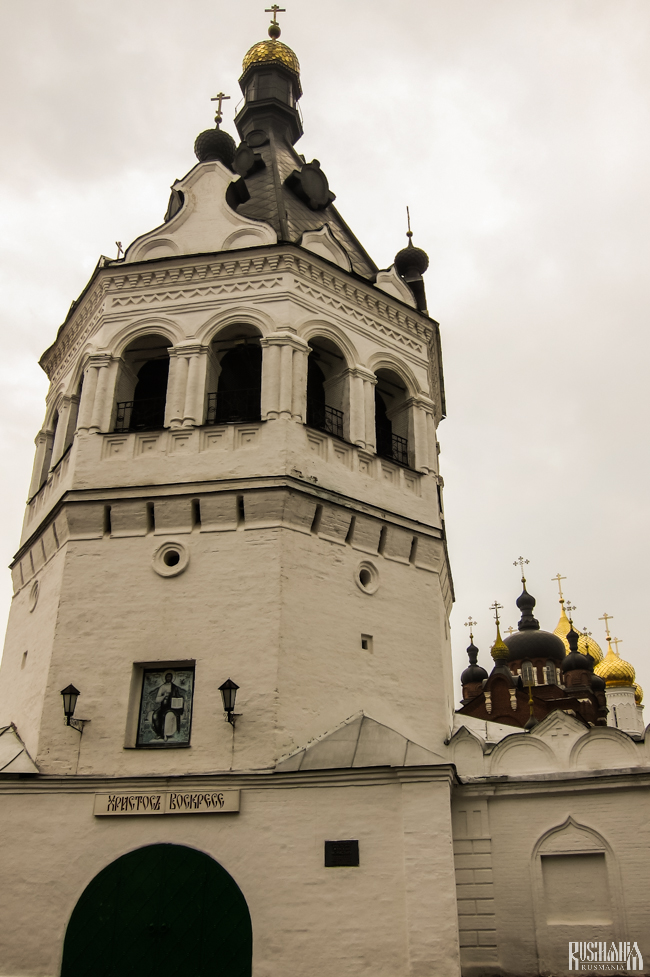Away from the Centre
Bogoyavlensko-Anastasiin Convent

The Bogoyavlensko-Anastasiin Convent started its life in the early 15th century when it was founded as the Bogoyavlensky Monastery by St Nikita of Kostroma, a pupil of St Sergius of Radonezh. St Nikita of Kostroma dedicated the monastery to the Epiphany ('Bogoyavlenie' in Russian). In 1565 the monastery's first stone cathedral was completed. In 1608 Polish troops led by Aleksander Lisowski sacked the monastery and killed the monks who refused to renounce their support of Tsar Vasili Shuisky. During the 17th century new stone churches were built and the monastery was surrounded by stone walls with towers.
The monastery fell into decline in the 18th century and was damaged by fire in 1779, but the final blow came in 1847 when it was virtually ruined in another more devastating fire and closed at the end of the same year. The monastery was reopened in 1863 but as the Bogoyavlensko-Anastasiin Convent, dedicated to both the Epiphany and St Anastasia the Roman. In 1918 the convent was closed again, this time by the Soviets. It was only reopened in 1990.
Epiphany and St Anastasia the Roman's Eparchial Cathedral

The convent's main building is the Epiphany and St Anastasia the Roman's Eparchial Cathedral which incorporates the Epiphany Cathedral which was built between 1559 and 1565. In form the cathedral is the standard white-stone four-pillar cube building topped with five golden domes. After the monastery was closed in 1847 and reopened as a convent in 1863, work began on enlarging the Epiphany Cathedral. An additional red-brick building in the Russian revival style with black domes was built on. This addition was dedicated to St Anastasia the Roman. After the convent was closed in 1918 the cathedral remained open for several years as a parish church until it too was closed in 1922 and subsequently used as an archive. It was only reopened in 1991 and became the Eparchial Cathedral of the Kostroma and Galich Eparchy. Also in 1991 the Our Lady of St Theodore Icon was transferred here where it remains today.
Our Lady of Smolensk Church

In 1672 a fresco depicting the Our Lady of Smolensk icon was painted on the wall of the south-west corner tower of the monastery. In the fire of 1779 the icon miraculously survived. Since this time it became known as the Our Lady of Smolensk-Kostroma Icon-Fresco. The Our Lady of Smolensk Church was subsequently built around the icon-fresco and completed in 1825. In 1920 the church was closed and the icon-fresco's priceless frame was transferred to Moscow. The church was returned to the Orthodox Church in 1990. Over the years only the outline of the icon-fresco survived, although it has been claimed that when working on its restoration, the Virgin Mary's eyes suddenly appeared to the restorers. After the restoration the church was re-consecrated in 2004.
| Location | 26 Ulitsa Simanovskogo |
|---|

 History
History